Transcription of Hopf Algebras, Renormalization and …
1 ArXiv:hep-th/9808042 v1 7 Aug 1998 hopf Algebras, Renormalization andNoncommutative GeometryAlain CONNESIHESDirk KREIMERM ainz 1998, IHES/M/98/60 AbstractWe explore the relation between the hopf algebra associatedto therenormalization of QFT and the hopf algebra associated to the NCGcomputations of tranverse index theory for [1] it was shown that the combinatorics of the subtractionprocedure inherentto perturbative Renormalization gives rise to a hopf algebraHRwhich providesa conceptual framework to understand the intricacies of theforest formula [2], it was shown that the delicate computational problemwhich arisesfrom the transverse hypoelliptic theory of foliations, as formulated in noncom-mutative geometry , can only be settled thanks to a hopf algebraHTassociatedto each integer codimension. This hopf algebra reduces transverse geometry , toa universal geometry of affine aim of this paper is to establish a close relation betweenthe above HopfalgebrasHRandHT.
2 We shall first recall the first results of [2] which describein the simplest case of codimension 1 the presentation of theHopf shall then explain the origin of the hopf algebraHRfrom the renormal-ization of the divergences of QFT and show following [1] howHRis used inconcrete problems of Renormalization theory. In the appendix we include thecase of overlapping then give the presentation of the simplest model ofHRnamely theHopf algebra of rooted trees, and show that it is uniquely characterized as thesolution of a universal problem in Hochschild cohomology. We then determinethe formal Lie algebraGsuch thatHRis obtained as the dual of the enveloppingalgebra of this Lie algebra . It turns out to be a refinement of the Lie algebra offormal vector fields in one dimension. We then show that many of the results1of [2] actually extend to this refinement of formal vector fields. These resultsindicate that parallel to the ordinary differential calculus which underlies thetransverse structure of foliations, the recipes of Renormalization theory shouldbe considered as a refined form of calculus and should be understandable on aconceptual , in the first section we show in Theorem (8) that the algebraicrules of the hopf algebraHTare the expression of the group law of compositionof diffeomorphisms ofRin terms of the coordinates ngiven by the Taylorexpansion of log( (x)) atx= 0.
3 In particular this shows that the antipodeinHTis, modulo a change of variables, the same as the operation ofinversionof a formal power series for the composition the second section we begin by the simplest and most explicit examplesof divergent integrals of the kind that are met in Quantum Field Theory describe in this toy case the explicit counterterm construction and theimmediate problem which arises from divergent subintegrations and explain howthe hopf algebraHRfinds the combinatorial solution of the subtraction problemfrom its next explain why the same holds in QFT (the treatment of overlappingdivergences is postponed to the appendix).In the third section we exhibit the precise relation and analogy betweenHRandHTto the point that the antipode inHRappears as a direct analogue ofthe antipode inHTwhich we understood above as the inversion of formal powerseries. The key nuance between the two hopf algebras is that whereHTusesintegers to label the Taylor expansion, the hopf algebraHRuses rooted treesfor The hopf algebraHTThe computation of the local index formula for transversally hypoelliptic oper-ators ([2]) is governed by a very specific hopf algebraHT, which only dependsupon the codimensionnof the foliation.
4 The structure of this hopf algebra , itsrelation with the Lie algebra of formal vector fields as well as the computationof its cyclic cohomology have been done in [2].In order to pursue the analogy between this development and the discoveryby D. K. ([1]) of the hopf algebra underlying Renormalization , we shall recallhere in all details the presentation and first properties of the hopf algebraHTinthe simplest case of codimension one. Useless to say this does not dispense onefrom consulting [2], in particular in connection with the specific representationofHTon crossed product algebras and the corresponding first define a bialgebra by generators and relations. As an algebra weviewHTas the envelopping algebra of the Lie algebra which is the linear span2ofY,X, n,n 1 with the relations,[Y,X] =X,[Y, n] =n n,[ n, m] = 0 n,m 1,[X, n] = n+1 n 1.(1)The coproduct inHTis defined by Y=Y 1+1 Y , X=X 1+1 X+ 1 Y , 1= 1 1+1 1(2)with ndefined by induction using (1) and the equality, (h1h2) = h1 h2 hj HT.
5 (3)Lemma above presentation defines a hopf checks that the Lie algebra relations (1) are fulfilled bythe ele-ments (Y), (X), ( 1), so that, by the universal property of the enveloppingalgebra, extends to an algebra homomorphism, :HT HT HT(4)and using the uniqueness of the extension, one also checks the needs to show the existence of the antipodeS. It is characterizedabstractly as the inverse of the elementL(a) =ain the algebra of linear mapsLfromHTtoHTendowed with the product(L1 L2)(a) = L1(a(1))L2(a(2)) a= a(1) a(2), a HT.(5)A simple computation shows thatSis the unique antiautomorphism ofHT(n)such that,S(Y) = Y S( 1) = 1S(X) = X+ 1Y .(6)Note that the square ofSis not the order to understand the hopf algebraHT, we first analyse the commuta-tive subalgebra generated by the eachnwe letHnbe the subalgebra generated by 1,.., n,Hn={P( 1,.., n) ;Ppolynomial innvariables}.(7)We letHn,0be the ideal,Hn,0={P;P(0) = 0}.
6 (8)By induction onnone proves the followingLemma eachnthere existsRn 1 Hn 1,0 Hn 1,0such that n= n 1 + 1 n+Rn has 1= 1 1 + 1 1, and a simple computation shows that, 2= 2 1 + 1 2+ 1 1,(9)and, 3= 3 1 + 1 3+ 21 1+ 2 1+ 3 1 2.(10)In general, one determinesRnby induction, usingRn= [X 1 + 1 X,Rn 1] +n 1 n+ [ 1 Y,Rn 1].(11)Since [X,Hn 1,0] Hn,0and [Y,Hn 1,0] Hn 1,0 Hn,0, one gets thatRn Hn,0 Hn, equality (10) shows thatHnis not cocommutative forn 3. However,since it is commutative, we shall determine the corresponding Lie algebra , usingthe Milnor-Moore the Lie algebra of jets of order (n+ 1) of vector fields on the line,f(x) / x , f(0) =f (0) = 0moduloxn+2 / hopf algebraHnis the dual of the envelopping agebraU(A1n),Hn=U(A1n) . eachk nwe introduce a linear formZk,nonHn Zk,n,P =( kP)(0).(12)One has by construction, Zk,n,PQ = Zk,n,P Q(0) +P(0) Zk,n,Q .(13)Note that , ,P =P(0) is the counit ofHn, L , P = L, P = L,P P Hn.
7 (14)(Check both sides on a monomialP= ann.)Thus in the dual agebraH none can write (13) as Zk,n=Zk,n 1 + 1 Zk,n.(15)Moreover theZk,nform a basis of the linear space of solutions of (15) and wejust need to determine the Lie algebra structure determinedby the ,Z k,n= (k+ 1)!Zk,n.(16)4 Let us show that [Z k,n,Z `,n] = 0 ifk+` > n, and that,[Z k,n,Z `,n] = (` k)Z k+`,n,(17)ifk+` n. LetP= annbe a monomial. We need to compute P,Zk,n Z`,n Z`,n Zk,n . One has P= ( 1 1 + 1 1)a1( 2 1 + 1 2+R1) ( n 1 + 1 n+Rn 1) look for the terms in k `or ` kand take the difference. The latteris non zero only if allaj= 0 exceptaq= 1. Moreover sinceRmis homogeneousof degreem+1 one getsq=k+`and in particular [Z k,n,Z `,n] = 0 ifk+` > then computes by induction using (11) the bilinear part ofRm. One hasR(1)1= 1 1, and from (11)R(1)n= [(X 1 + 1 X),R(1)n 1] +n 1 n.(18)This givesR(1)n 1= n 1 1+C1n n 2 2+..+Cn 2n 1 n 1.(19)Thus the coefficient of k `isC` 1k+`and we get[Zk,n,Z`,n] = (C` 1k+` Ck 1k+`)Zk+`,n.
8 (20)One has(k+1)! (`+1)!(k+`+1)!(C` 1k+` Ck 1k+`) =`(`+1) k(k+1)k+`+1=` kthus one gets (17).The elementsZk,n=xk+1(k+1)! / xof the Lie algebraA1nare related by (16) toZ k,n=xk+1 / xwhich satisfy the Lie algebra relations (17). The result thenfollows from the Milnor-Moore a projective system of Lie algebras, with limit the Lie algebraA1of formal vector fields which vanish at order 2 at 0. Thus the inductive limitH1of the hopf algebrasHnis,H1=U(A1) .(21)The Lie algebraA1is agradedLie algebra , with one parameter group of auto-morphisms, t(Zn) =entZn(22)which extends toU(A1) and transposes toU(A1) as [Y,P],a = P, t t(a)t=0 P H1, a U(A1).(23)Indeed ( t)tis a one parameter group of automorphisms ofH1such that tt( n) =ent n.(24)5 Now, using the Poincar e-Birkhoff-Witt theorem, we take thebasis ofU(A1)given by the monomials,ZannZan 1n , aj 0.(25)To eachL U(A1) one associates the formal power series L( )an!..a1! ,(26)in the commuting variablesxj,j follows from [3] that we obtain in this way an isomorphism of thealgebra of polynomialsP( 1.)
9 , n) on the algebra of polynomials in thexj determine the formula for nin terms of thexj s, we just need to compute n, .(27)Note that, by homogeneity, (27) vanishes unless j aj= 1, we get ( 1) =x1(28)where is the above determine ( n) by induction, using the derivationD(P) = n+1 n(P)(29)(which corresponds toP [X,P]).One has by construction, n,a = n 1,Dt(a) a U(A1)(30)whereDtis the transpose definition ofZnas a linear form (12) one has,DtZn=Zn 1, n 2, DtZ1= 0.(31)Moreover the compatibility ofDtwith the coproduct ofH1is given byDt(ab) =Dt(a)b+aDt(b) + ( 1a) tb a,b U(A1)(32)wherea 1ais the natural action of the algebraH1on its dual P, 1a = P 1,a P H1, a U(A1).(33)Lemma restricted toU(A2),Dtis the unique derivation, with valuesinU(A1)satisfying (32), moreoverDt( ) =Dt( )Za11+ (a1 1)2Za1 equality 1= 1 1 + 1 1shows thata 1ais a derivationofU(A1). One has 1Zn= 0 forn6= 1 so that 1= 0 onU(A2) and the firststatement follows from (31) and (32).
10 The second statement follows from,Dt(Zm1) =m(m 1)2Zm 11(34)which one proves by induction onmusing (32).2 Motivated by the first part of the lemma, we enlarge the Lie algebraA1byadjoining an elementZ 1such that,[Z 1,Zn] =Zn 1 n 2,(35)we then defineZ0by[Z 1,Z1] =Z0,[Z0,Zk] =kZk.(36)The obtained Lie algebraA, is the Lie algebra of formal vector fields withZ0=x x,Z 1= xand as aboveZn=xn+1(n+1)! the left ideal inU(A) generated byZ 1,Z0,Proposition linear mapDt:U(A1) U(A1)is uniquely determinedby the equalityDt(a) = [Z 1,a] us compareDtwith the bracket withZ 1. By Lemma 4, they agreeonU(A2). Let us compute [Z 1,Zm1]. One has[Z 1,Zm1] =m(m 1)2Zm 11+mZm 11Z0.(37)For each hasDt(a) [Z 1,a] L. Thus this holdsfor anya U(A1). Moreover, using the basis ofU(A) given by 1 1we see thatU(A) is the direct sumL U(A1).2We now define a linear formL0onU(A) byL0( 1 1) = 0 unlessa0= 1, aj= 0 j ,(38)andL0(Z0) = anyn 1one has n,a =L0([.)]
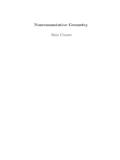
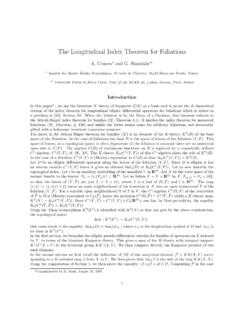

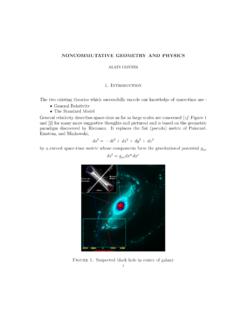
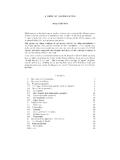
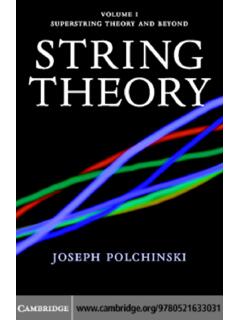
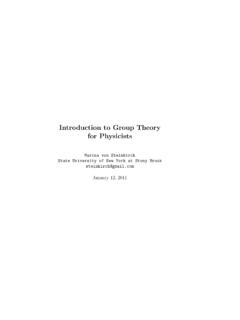
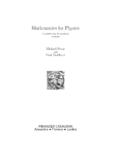

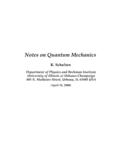
![arXiv:math/0506118v1 [math.RT] 7 Jun 2005](/cache/preview/a/0/e/8/c/7/9/f/thumb-a0e8c79fc19aa6a7cf367bc643a41e7c.jpg)